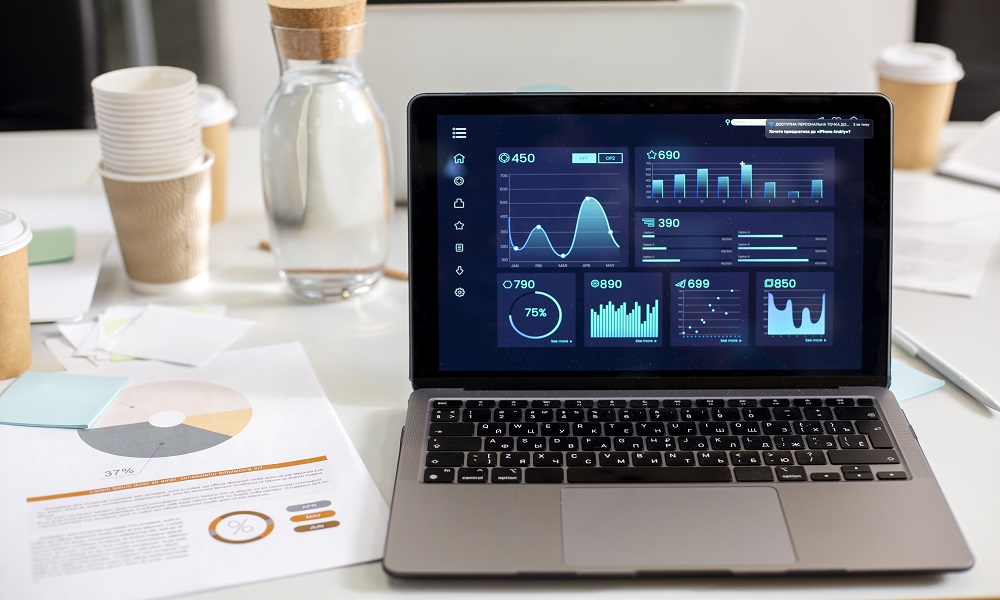The Internet of Things (IoT) has become a significant part of modern technology, enabling a wide range of connected devices to interact with each other and the world around them. The combination of data science and IoT has paved the way for new possibilities in data analysis, providing businesses with valuable insights and fostering innovation across various industries. In this article, we will explore how data science can be applied to IoT data, covering the process of data collection and analysis and the benefits it offers.
Introduction to IoT and Data Science
The Internet of Things (IoT) refers to the network of physical devices, vehicles, appliances, and other objects embedded with sensors, software, and connectivity to exchange and collect data. The rapid rise of IoT has led to the generation of massive amounts of data from connected devices, which, when analysed correctly, can provide actionable insights.
Data science is crucial in making sense of this vast amount of data. Data scientists can uncover patterns, trends, and valuable information from IoT data by applying machine learning, statistical analysis, and predictive modelling. As IoT expands, the demand for data scientists skilled in handling and analysing IoT data has grown substantially. For those interested in pursuing a career in this field, a data science course in Pune offers specialised training to help you develop the necessary skills.
The Role of IoT in Data Collection
IoT devices collect data through sensors embedded in devices like wearables, home automation systems, industrial machines, and even smart city infrastructure. These devices continuously monitor and gather data, ranging from temperature and humidity to motion and GPS location.
The data collected by IoT devices is usually in real-time, which makes it particularly valuable for industries that require up-to-date information. For example, IoT devices used in smart agriculture can monitor soil moisture levels, temperature, and crop health, enabling farmers to make informed decisions that improve crop yield. Similarly, IoT devices in healthcare allow for real-time monitoring of patient vitals, leading to faster diagnosis and treatment.
However, to fully benefit from the data generated by these devices, companies need to employ data science techniques to process, analyse, and make predictions based on the collected data. Suppose you want to specialise in the intersection of IoT and data science. In that case, taking a data scientist course can provide the foundation to understand how to work with such data effectively.
Challenges in Collecting IoT Data
While IoT data has immense potential, it also presents several challenges. One of the biggest challenges is the volume of data connected devices generate. This vast amount of data requires efficient data storage solutions and processing power to handle. Without proper infrastructure, it becomes difficult to manage and analyse data effectively.
Another challenge is the heterogeneity of IoT data. Different devices often generate data in varying formats, making it difficult to standardise and integrate it into a single database for analysis. Furthermore, ensuring the accuracy and reliability of the data is essential, as erroneous data can lead to incorrect insights and flawed decision-making.
To tackle these challenges, data scientists must use advanced data engineering techniques, including cleaning, transformation, and normalisation. Learning these skills in a data scientist course can help you build expertise in preparing and processing IoT data for analysis.
Analysing IoT Data with Data Science Techniques
Once IoT data is collected, the next step is analysis. Data scientists use various techniques to extract meaningful insights from the data. Machine learning (ML) and artificial intelligence (AI) are two primary approaches to analysing IoT data, as they can automatically detect patterns and trends that may be difficult for humans to identify.
Predictive Analytics
Predictive analytics is one of the most common applications of data science in IoT. Data scientists can forecast future trends and behaviours by applying machine learning algorithms to IoT data. For example, in manufacturing, IoT sensors on machines can monitor their condition and predict when they will require maintenance, allowing companies to schedule repairs before equipment breaks down. This predictive capability not only reduces downtime but also saves businesses significant costs.
Real-time Analytics
Real-time analytics is another powerful tool for IoT data analysis. With the constant stream of data coming from IoT devices, data scientists can use real-time analytics to make immediate decisions based on the most current information available. For instance, in the healthcare industry, real-time data analysis from wearable devices can alert medical staff to any concerning changes in a patient’s condition, enabling quicker intervention.
Anomaly Detection
Data science also plays a key role in anomaly detection, where machine learning models are trained to identify unusual patterns or outliers in IoT data. For example, in smart home systems, anomaly detection can be used to identify irregular patterns in energy consumption, indicating a potential fault or malfunction in the system. Identifying anomalies early can help prevent costly repairs and improve the efficiency of connected devices.
Benefits of Data Science for IoT

The integration of data science with IoT offers numerous benefits across various industries.
Here are some of the key advantages:
Improved Decision-Making
By analysing data from connected devices, businesses can make more informed decisions. For example, data from IoT sensors on delivery trucks can be analysed in logistics to optimise routes, reduce fuel consumption, and improve delivery times. Analysing customer behaviour through IoT devices can help companies better understand consumer preferences and personalise marketing strategies in retail.
Enhanced Efficiency
Data science helps organisations maximise the efficiency of their operations by identifying areas for improvement. In manufacturing, for instance, analysing data from IoT sensors on production lines can highlight inefficiencies, allowing businesses to make adjustments that boost productivity and reduce waste.
Cost Reduction
IoT data analysis can lead to significant cost savings for businesses. Organisations can avoid costly repairs and equipment failures by predicting maintenance needs and reducing downtime. Additionally, IoT devices can be used to monitor energy usage, helping companies reduce utility costs.
Future of IoT and Data Science
As IoT continues to grow, so will the role of data science in analysing IoT data. The development of 5G networks and advancements in edge computing will further enhance the capabilities of connected devices, enabling faster data transmission and more efficient processing. This will open up new opportunities for real-time data analysis and decision-making, benefiting healthcare, transportation, and agriculture industries.
For those looking to dive deeper into the field, enrolling in a data science course in Pune will help you acquire the technical expertise needed to work with IoT data. The course will equip you with the skills necessary to excel in this fast-growing field, from data collection to advanced machine learning algorithms.
Conclusion
Data science and IoT convergence have revolutionised how businesses collect and analyse data. Organisations can unlock valuable insights that drive decision-making, improve efficiency, and reduce costs by leveraging data science techniques such as predictive analytics, real-time analytics, and anomaly detection. As the number of connected devices continues to grow, the demand for skilled data scientists will only increase, making it an exciting and rewarding field for those pursuing a career in IoT data science. To build your expertise in this area, consider enrolling in a data science course in Pune to acquire the skills needed to thrive in connected devices and data-driven decision-making.
Business Name: ExcelR – Data Science, Data Analytics Course Training in Pune
Address: 101 A ,1st Floor, Siddh Icon, Baner Rd, opposite Lane To Royal Enfield Showroom, beside Asian Box Restaurant, Baner, Pune, Maharashtra 411045
Phone Number: 098809 13504
Email Id: enquiry@excelr.com





